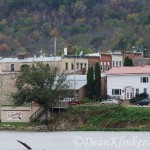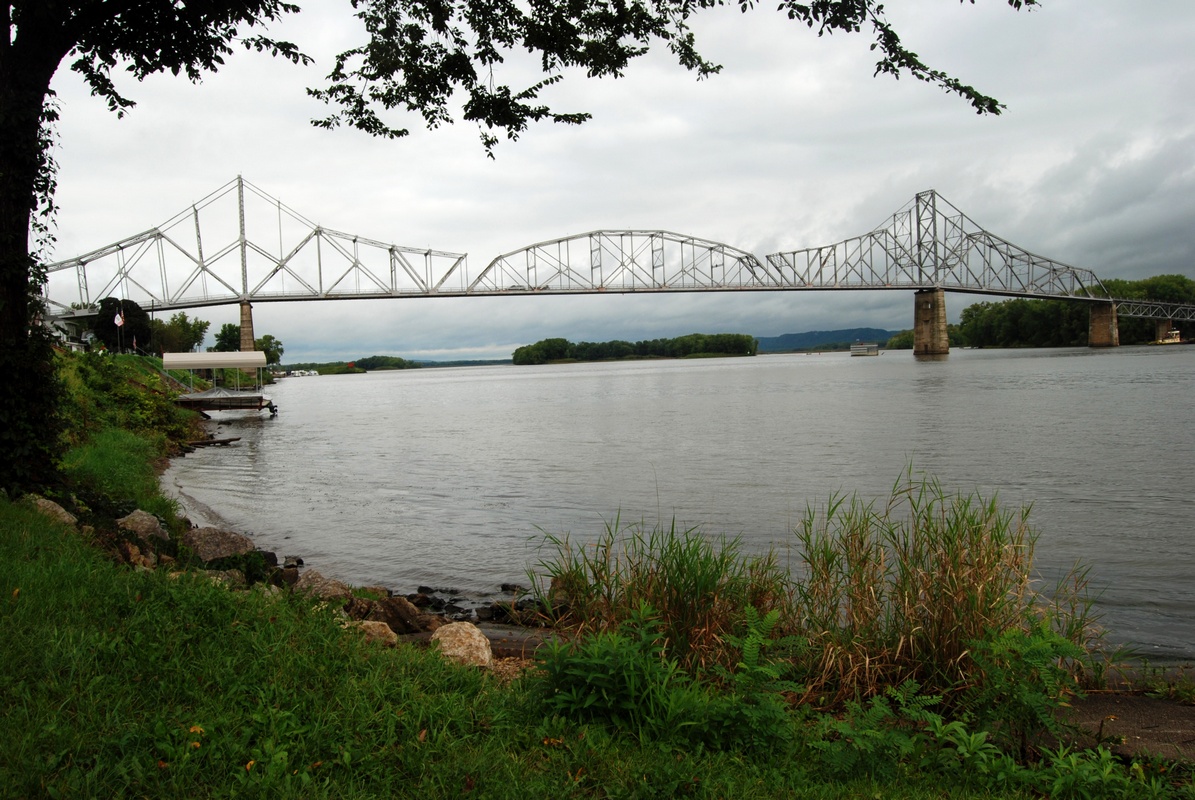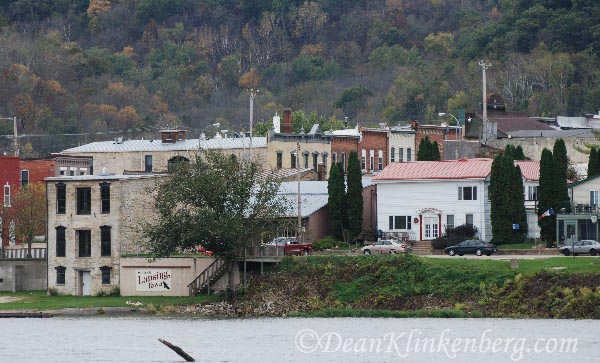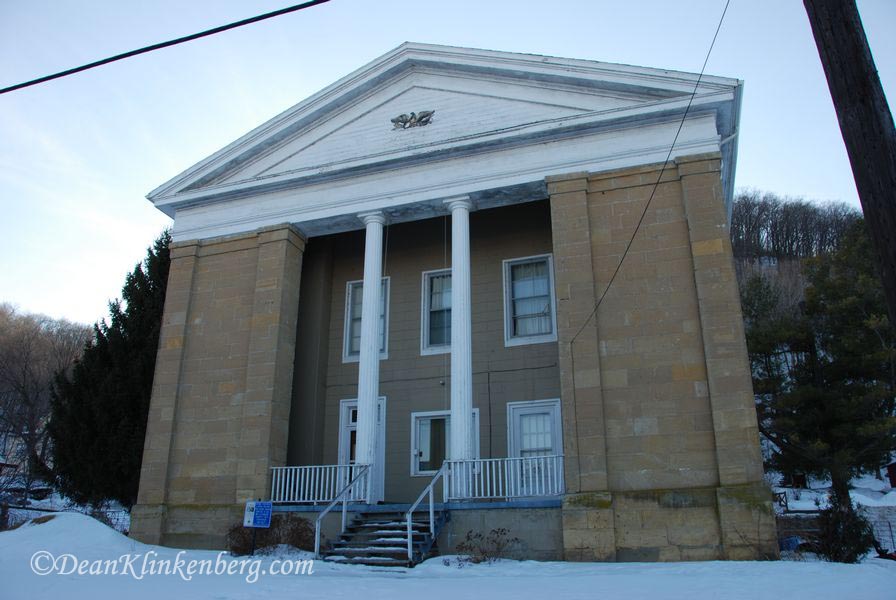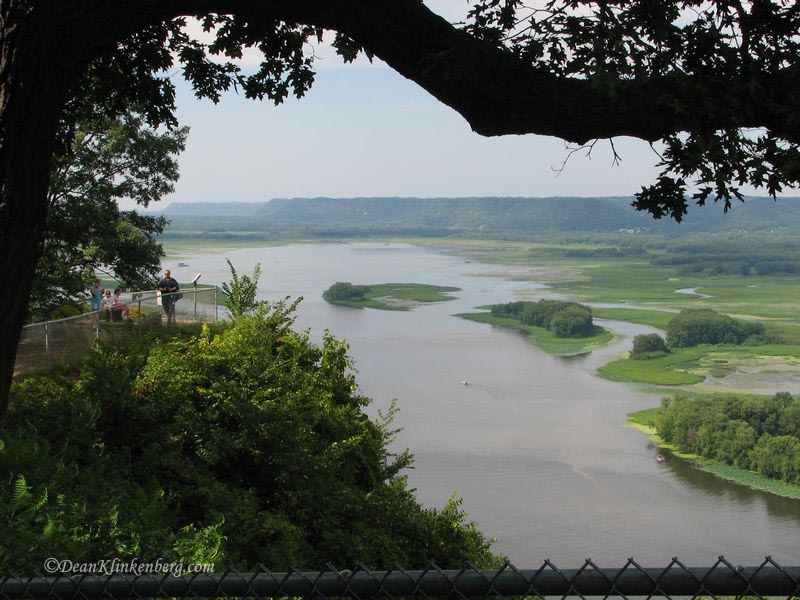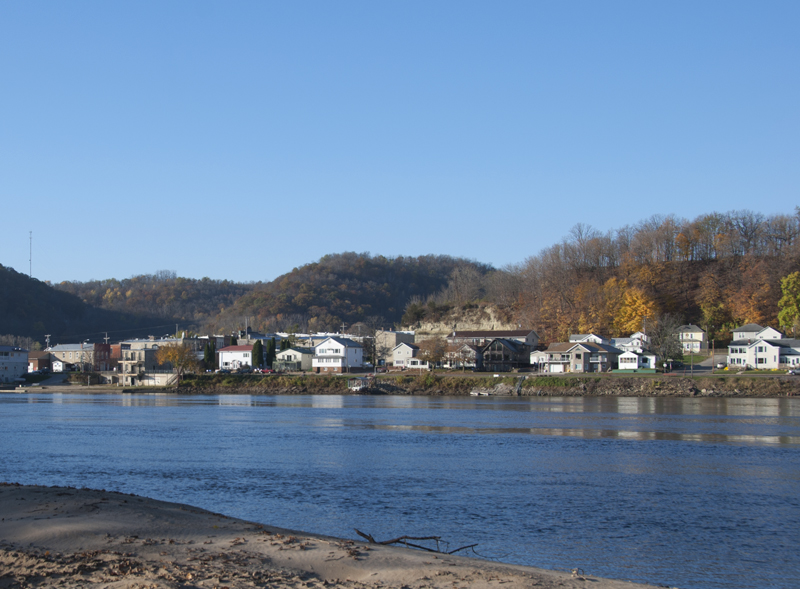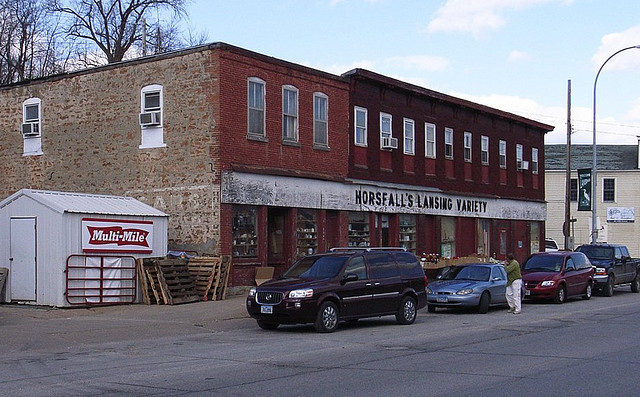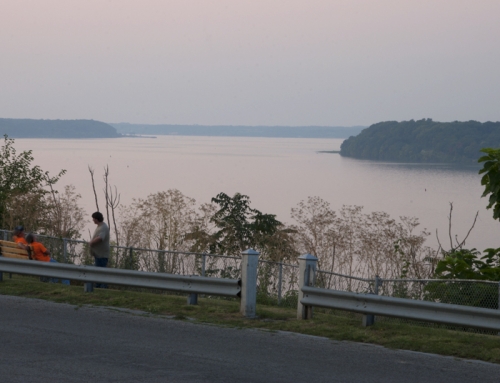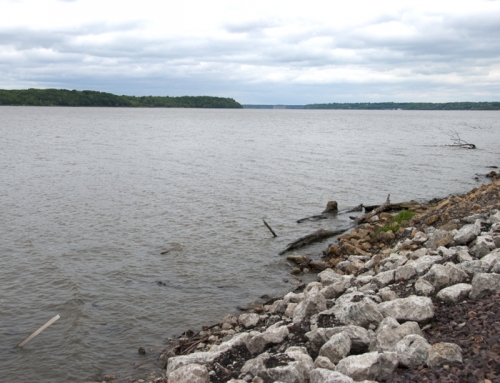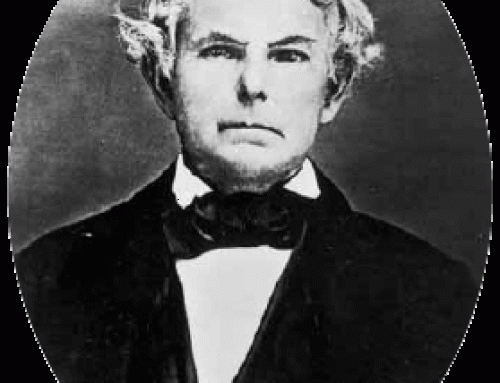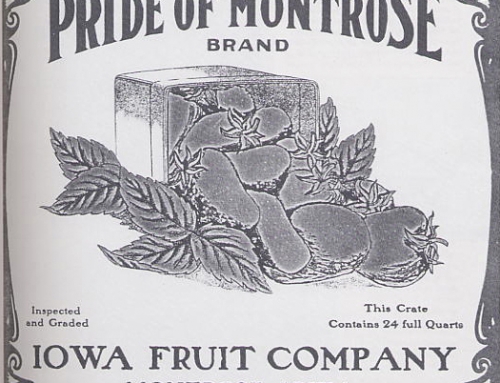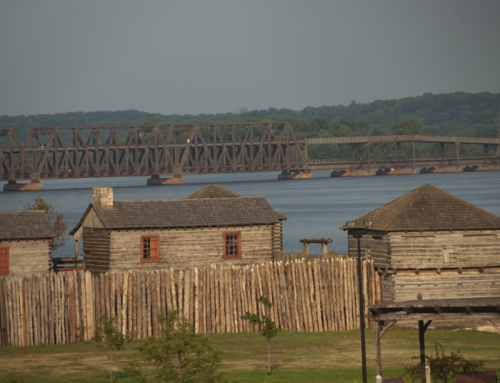Introduction
Lansing is a consummate river town, with an economy that has historically, for better or worse, been dependent upon the Mississippi River. Even if the Lansing of today has fewer people making a living from river-related jobs, the Mississippi remains central to the town’s identity.
Visitor Information
Tourism information is available through Main Street Lansing (563.538.9221) or Allamakee County Economic Development (563.568.2624).
History
Europeans moved into the area in 1848, just as the Ho Chunk were leaving. Among the first settlers was William Garrison, who hailed from Lansing, Michigan. He did not stick around, but his name for the town did. The following year, Galena transplants John Haney and his son, James, arrived, followed in short order by H.H. Houghton. They built a few mills in Lansing and prospered. Houghton used part of his fortune to build a stone mansion on the side of Mt. Hosmer in 1863 (it is still there).
Lansing was a remote outpost in those early years. Boats passed town just a few times a month and rarely stopped. Communication with the outside world was sporadic in the winter with mail arriving only once a week. Residents had to travel across the frozen Mississippi to Prairie du Chien, which had the nearest railroad. When the ice was not thick enough to walk across, Lansing residents were on their own. The town had a good spot for steamboats to land and eventually became a key supply point for the region; the town grew five-fold in 20 years—from 440 residents in 1854 to 2,280 in 1875.
Just south of nascent Lansing, the town of Columbus also had a bustling boat landing. Columbus was chosen as the first county seat in 1851. When the town was platted in 1852, two acres were set aside for county buildings; nothing was ever built and, when the county seat was moved, Columbus essentially disappeared. A name change in 1857—to Capoli, in honor of the bluff of the same name above town (this bluff was called Cap-a-l’ail by Henry Schoolcraft)—did not save the town.
Lansing residents have been resilient in the face of changing economic fortunes. The town’s initial growth was fueled by a booming trade in shipping grain and the Kerndt brothers (Gustav, Moritz, William, Julius) were part of the reason. They built a warehouse in 1859 and an elevator in 1861; both riverfront structures are still are standing. Fortunes slumped for a while as the wheat harvest declined, but farmers eventually switched to dairy, livestock, and other crops. Local industry received a boost when the Chicago, Milwaukee and St. Paul railroad arrived in 1872; townsfolk threw an exuberant party on May 8 to celebrate the arrival of the first train.
Lansing also profited from the lumber business in the late 1800s; during the peak years of the lumber trade, log rafts floated continuously downriver. As the great northern forests were depleted around the turn of the 20th century, Lansing developed an industry producing pearl buttons from Mississippi River mussels. As the pearl button industry declined in the 1920s, commercial fishing took up the slack. Lansing’s economy today is closely tied to farming, with a boost from the tourist trade.
Exploring the Area
The Driftless Area Education and Visitor Center (1944 Columbus Rd.; 563.538.0400) sits at the south end of town with panoramic views of the river. Inside, you’ll find displays on the area’s unique river ecology and human history.
The Museum of River History (60 S. Front St.; 563.538.4641) is one of my favorite local history museums along the Mississippi. Housed in the Kerndt & Brothers Elevator, the collection is focused on—get out!—river history. Wow. Displays illustrate the fishing business with tools of the trade for clamming, fish processing, and ice harvesting. Heck, they even have a collection of outboard motors. You can visit the museum whenever Coffee on the River is open.
If you enjoy panoramic views of the Mississippi River, look no further than Mount Hosmer Park (N. 6th St.; 563.538.4757), a 75-acre bluff-top park that rises 440 feet above the water. It was named after one Harriet Hosmer, a rather well-known sculptor from the East Coast in her day, who was reported to have raced up the hill in record time during a steamboat stop in June 1851.
Our Savior’s Lutheran Church (480 Diagonal St.; 563.538.4664) was founded in 1867 as Norwegian Evangelical Lutheran Church; Norwegian-language services were offered as late as the 1940s. The current building was completed around 1878. In 1946, the building was expanded when the closed Faegre Prairie Church was moved and attached to the east side (and given a matching brick façade); the art glass windows original to Faegre Prairie Church now adorn the parish hall. If you are here on a Wednesday evening, join them at the church for the Laughter Club, where they practice Laughter Yoga (good for people of all physical abilities); you don’t need to speak Norwegian to participate.
Horsfalls Lansing Variety (300 & 360 Main St.; 563.538.4966) is an old-fashioned variety store—two variety stores, to be precise—where “variety” is taken seriously. Wander through tightly packed aisles stacked high with toys, kitchen supplies, greeting cards, and just about anything else you can imagine. You may want to leave a trail of bread crumbs to find your way back out.
Art & Culture
Check out the landscape paintings at Easker Art Studio Gallery (271 Main St.; 319.393.1423), many of which feature the Mississippi River and nearby areas. Artist Fred Easker is usually in the studio the first two Fridays and Saturdays of the month but call ahead to confirm if you want to visit the studio.
Getting on the River
S & S Rentals Houseboat Rentals (990 S. Front St.; 563.538.4454) can equip you with a houseboat to explore the Mississippi River.
Entertainment and Events
Farmers Market
Lansing hosts a farmers market along Main Street on Saturday mornings from June to October.
Festivals
Lansing Fish Days (563.538.4641) is the event of the summer social season in Lansing, usually held the second weekend in August; highlights include duck races, granny basketball, and eating lots of fish.
**Lansing is covered in Road Tripping Along the Great River Road, Vol. 1. Click the link above for more. Disclosure: This website may be compensated for linking to other sites or for sales of products we link to.
Where to Eat and Drink
Coffee on the River (60 S. Front St.; 563.538.2899) serves the usual coffee and tea drinks in a beautiful historic stone building along the river. They also offer sandwiches and salads that you can enjoy from the back deck overlooking the river.
NutMeg’s Bakery (367 Main St.; 563.538.9214) is a good option for fresh baked goods, as well as breakfast and lunch choices including flat bread pizzas.
Milty’s Restaurant and Bar (200 Main St.; 563.538.4585) is a festive place, with friendly staff and reliable food. Entrées include the standard range of steaks, pork, and pasta, but Milty’s also offers themed buffets on a regular basis (seafood, Mexican) and a Friday night fish fry. They also have live music on some nights.
Shep’s Riverside Bar and Restaurant (10 S. Front St.; 563.538.2009) serves burgers and sandwiches with great views of the river.
Where to Sleep
Camping & Cabins
Red Barn Resort and Campground (2609 Main St.; 563.538.4956; open mid-April thru mid-October) has 117 sites on the western edge of Lansing, most with water and electric; they also offer RVs for nightly rentals and a small house that could sleep 8-10 people.
Budget
The Scenic Valley Motel (1608 Main St.; 563.538.4245) rents 12 rooms, some with small refrigerators, and a cabin with microwave, refrigerator, and stove. Rooms are well maintained and clean, but not big.
The River View Inn in Lansing (563.537.0072) rents four affordable rooms in an old stone warehouse that come with good river views.
Bed-and-Breakfast Inns
Located in a quiet neighborhood just off Main Street, the Thornton House B&B (371 Diagonal St.; 563.538.3373) rents five comfortable rooms in a 19th century Victorian house near Mt. Hosmer; guests are served a full breakfast.
Moderate and up
McGarrity’s Inn on Main (Lansing: 203 Main St.; 563.538.2080) offers four impressively rehabbed, luxury suites; each unit is spacious, beautiful and loaded with amenities like exposed brick walls, wood floors, cable TV, full bath, and kitchenette.
For something completely different, consider a dockside stay in a houseboat with S & S Houseboat Rentals (990 S. Front St.; 563.538.4454; rentals from mid-May–mid-October; WiFi). The houseboats are comfortable and can rock 6-10 people to sleep, depending on the model.
Another riverfront option, the Blue Heron Inn (20 N. Front St.; 563.568.7686) rents a large, modern apartment in a solid limestone building on the riverfront; the unit has two bedrooms, three bathrooms, and spacious common rooms and could accommodate up to 11 people.
Resources
- Post Office: 383 Main St.; 563.538.4767
- Meehan Memorial Lansing Public Library: 515 Main St.; 563.538.4693
Community-supported writing
If you like the content at the Mississippi Valley Traveler, please consider showing your support by making a one-time contribution or by subscribing through Patreon. Book sales don’t fully cover my costs, and I don’t have deep corporate pockets bankrolling my work. I’m a freelance writer bringing you stories about life along the Mississippi River. I need your help to keep this going. Every dollar you contribute makes it possible for me to continue sharing stories about America’s Greatest River!
Lansing Photographs
©Dean Klinkenberg, 2009,2011,2018
